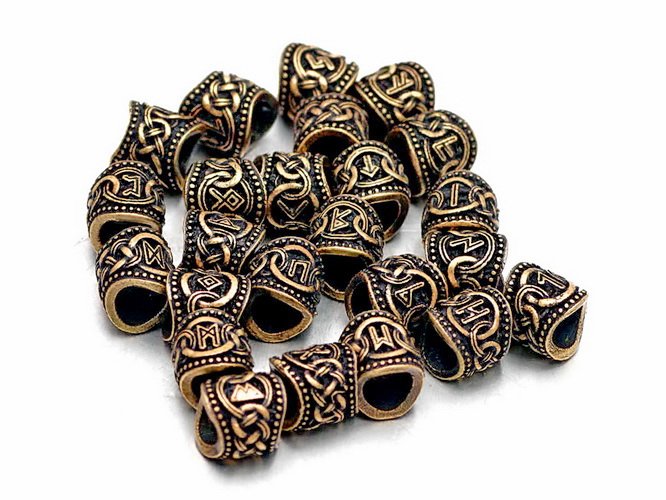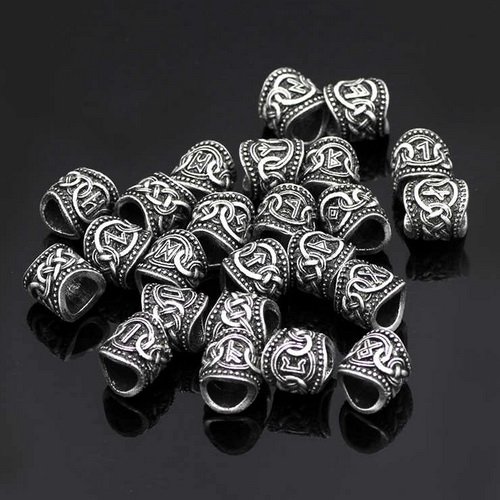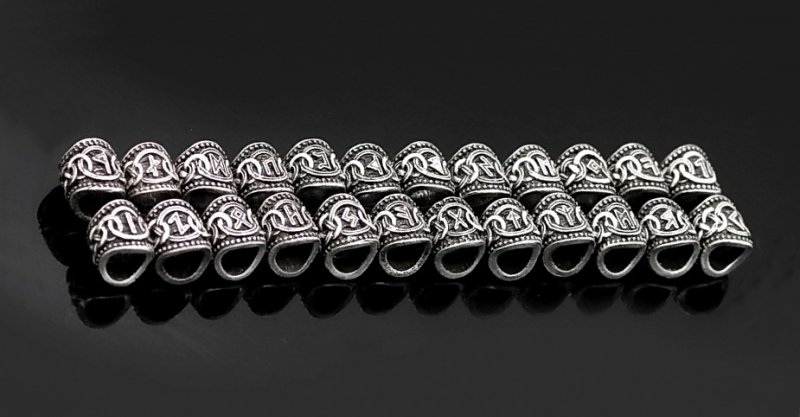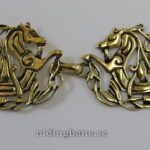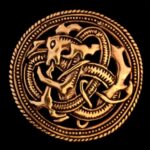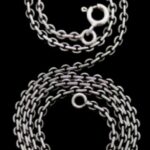Beskrivning
Set with rune hair brads in the style of the Vikings.
This set of 24 expressive rune hair beads in the style of the Vikings is made according to the Germanic runic alphabet, the so-called Futhark.
Each individual symbol on the 24 different rune hair beads represents a different meaning and corresponds to the signs of the older Germanic runic alphabet.
Rune hair bead dimensions: 1.2 x 1.3 cm. Hole diameter 8 mm.
The runic hair beads are available in brass and silver colour, made of zamak alloy.
For threading a rune hair bead it is advisable to sharpen the hair strand with some hair gel or water, so that it can be led more easily through the hole of the bead.
Before threading the rune bead, you can also use a small beard gum / braid gum if your hair is particularly straight. This makes it easier to place the hair bead and also ensures a secure fit. A real Viking uses a piece of yarn to wrap a runic hair bead in the right style.
The futhark or fuþark is the common Germanic rune series named after the first six runes (ᚠᚢᚦᚨᚱᚲ, F-U-Þ-A-R-K) of the rune alphabet. Here one distinguishes primarily between the older and the younger Futhark, although there are also several other variations.
The older Futhark consists of 24 characters, each of which is assigned to a certain sound and which was used in the same form by all Germanic tribes until about 750 AD. Therefore it is also called common Germanic Futhark. The oldest evidence of the Germanic runic writing dates back to the first and second century A.D., whereas the Futhark probably goes back to southern European models.
In North German Friesland as well as in England, an extended runic series developed from the late 5th century onwards, which was in use until the 11th century. This Futhark was extended by some new runes, which expressed the umlauts æ, y and œ, which had developed over time in the Germanic languages.
From the common Germanic rune alphabet finally developed the younger Futhark, which was limited to 16 runes, with the same character representing several sounds. At the end of the 10th century, different dotting was introduced, whereas the younger Futhark was widely used during the Viking Age and thus about 6000 runic inscriptions have been handed down until today.

